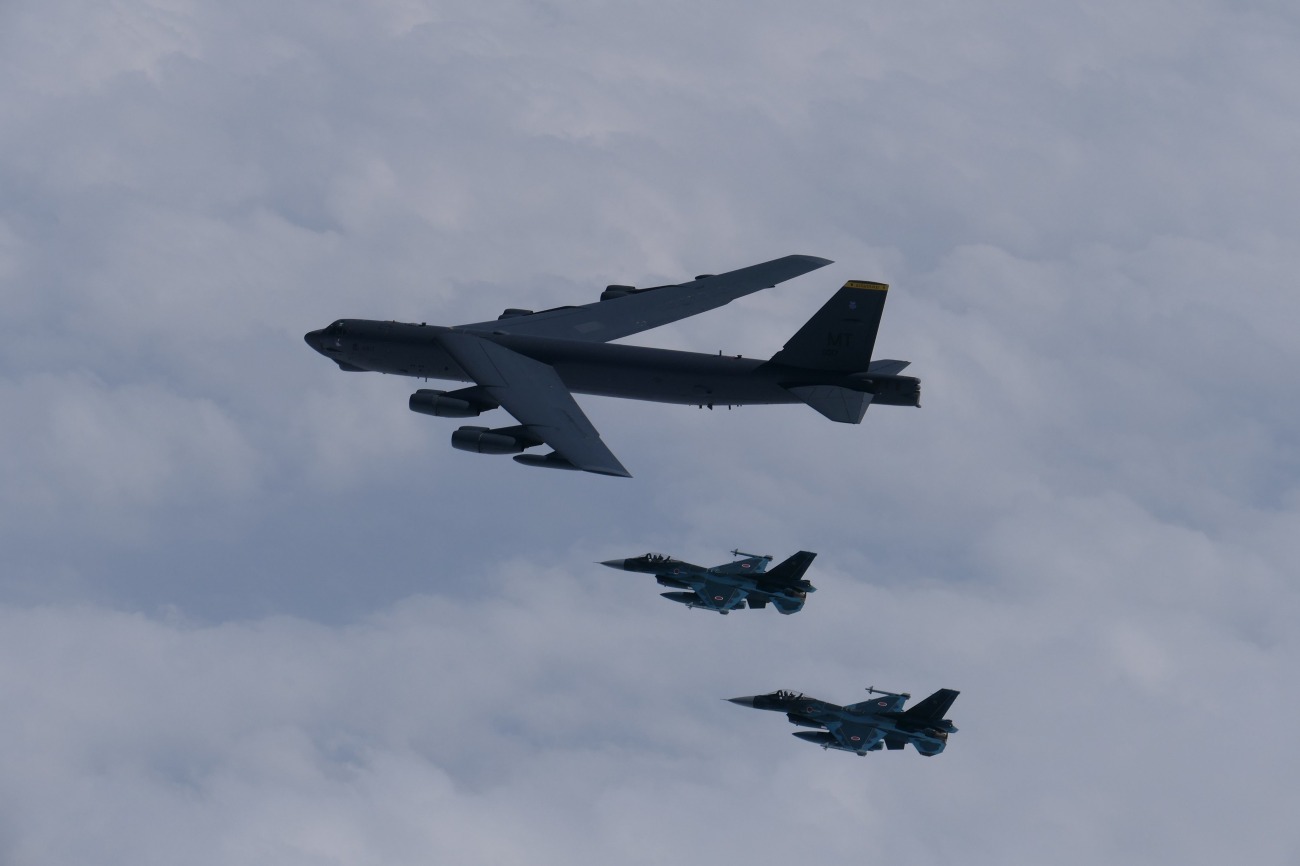Japan’s Defense Ministry has recently revealed that the number of scrambles conducted by its Air Self-Defense Force fighter jets during fiscal year 2023 hit a significant low, marking the lowest count in the past 10 years.
Data released on April 19 highlighted that Japanese jets were scrambled 669 times during the fiscal year 2023, which concluded on March 31. This figure stands 109 instances lower than the 778 scrambles recorded the previous fiscal year, marking the lowest total since fiscal 2013.
Even as the figures reflect a decline, Japan’s Joint Staff emphasized in a statement accompanying the data release that despite the decrease, the interception of foreign military aircraft remains frequent.
According to the released data, there was only one reported violation of Japan’s airspace involving a Russian aircraft, with no further details provided.
“Since fiscal 2013, the number of scrambles continues to be at a high level, with over about 700 scrambles conducted every fiscal year, and military aircraft continue to be active around Japan,” the statement noted.
The data pointed out that Chinese aircraft were the primary provocateurs, with Japanese pilots scrambling 479 times against approaching Chinese planes during the past fiscal year, a decrease from the 575 scrambles recorded the previous year.
Further, Japanese jets scrambled 174 times against approaching Russian planes in fiscal 2023, marking the lowest response in a decade. This was down from 150 flights the previous year.
The Defense Ministry highlighted specific incidents, including that in June, Chinese aircraft passed between the Japanese islands of Miyako and Okinawa. Additionally, joint patrols by Chinese and Russian bombers over the East China Sea and Sea of Japan occurred in June and December 2023.
In August, a Chinese drone flew for the first time between Japan’s Yonaguni Island and Taiwan, crossing over the Sea of Japan.
Addressing these incidents, Defense Minister Minoru Kihara stated in a news conference, “The Ministry of Defense and the Self-Defense Forces will continue to take all possible precautions to ensure vigilance and surveillance and take strict measures against airspace violations.”
Apart from Chinese and Russian aircraft, the remaining 16 scrambles included one against Taiwanese aircraft and two against North Korean aircraft, which were included in the 3rd quarter scramble reports. Details for 13 other scrambles were not provided.
Deciphering The Decline In Air Scrambles Amid The Escalating Tension
Japan’s decline in air scrambles, particularly against Chinese and Russian aircraft, has not alleviated Tokyo’s concerns over Beijing and Moscow’s deepening military cooperation.
Despite the decrease in scrambles, Japan remains on high alert, closely monitoring developments in Sino-Russian relations and joint maneuvers near its borders.
Japan’s Chief Cabinet Secretary, Yoshimasa Hayashi, reiterated Japan’s vigilance during a recent press conference, emphasizing the country’s intent to closely observe the evolving dynamics between China and Russia.
Hayashi’s remarks underline Tokyo’s growing apprehension regarding the implications of enhanced military cooperation between the two neighboring powers.
Similarly, the Japanese Foreign Ministry’s 2024 Diplomatic Bluebook highlighted apprehensions over increased joint activities, including naval passages and joint patrols involving attack aircraft, conducted by Moscow and Beijing near Japanese waters.
“In the military sphere, [Russia’s] cooperation with China has increased, including the passage of [Chinese and Russian] naval vessels sailing together (July to August) and joint patrols [involving] attack aircraft (June and December),” the report said.

On the other hand, while the decrease in scrambles during fiscal year 2023 may suggest a relative easing of tensions, analysts caution against interpreting it as a sign of reduced regional instability.
Dzirhan Mahadzir, a defense journalist and analyst based in Malaysia, pointed out that the decline could be attributed to specific operational factors.
Mahadzir said, “This year’s reduced number of scrambles is likely because, in FY 2022, the PLAN (People’s Liberation Army Navy) Liaoning Carrier Strike Group (CSG) conducted two deployments in May and December of 2022, with flight operations near Japan’s southwest island prompting several scrambles.”
However, “in FY 2023, the Shandong CSG, despite conducting three deployments to the Western Pacific, deployed close to Japan once and conducted flight operations close enough to trigger scrambles by the JASDF,” he added.
Simultaneously, Russian aircraft have scaled back their activities near Japan in recent years, ostensibly due to the diversion of resources and attention toward the conflict in Ukraine.
Experts suggest that Russia’s military engagements in the ongoing war have strained its capacity to demonstrate force in the Indo-Pacific region.
- Contact the author at ashishmichel(at)gmail.com
- Follow EurAsian Times on Google News




